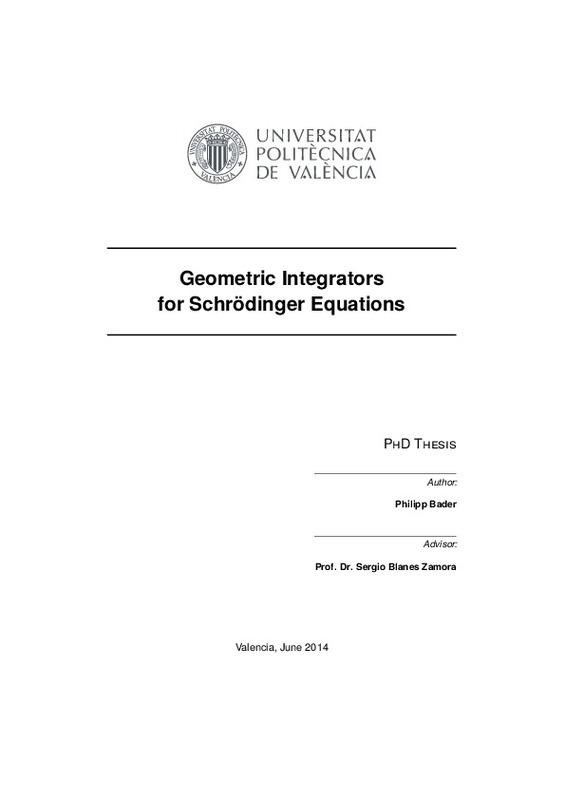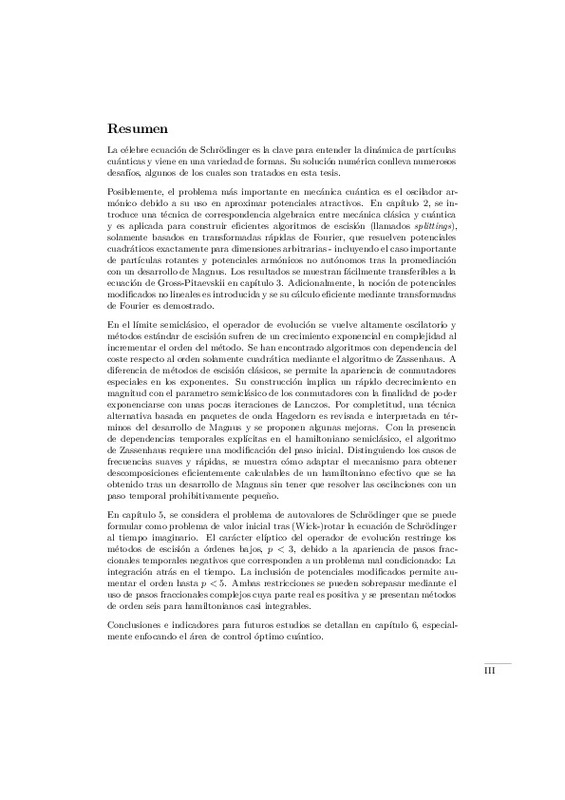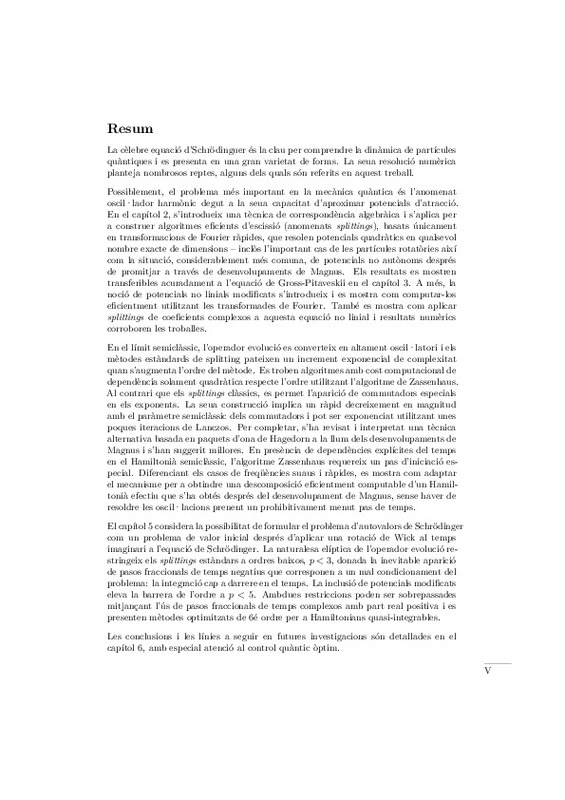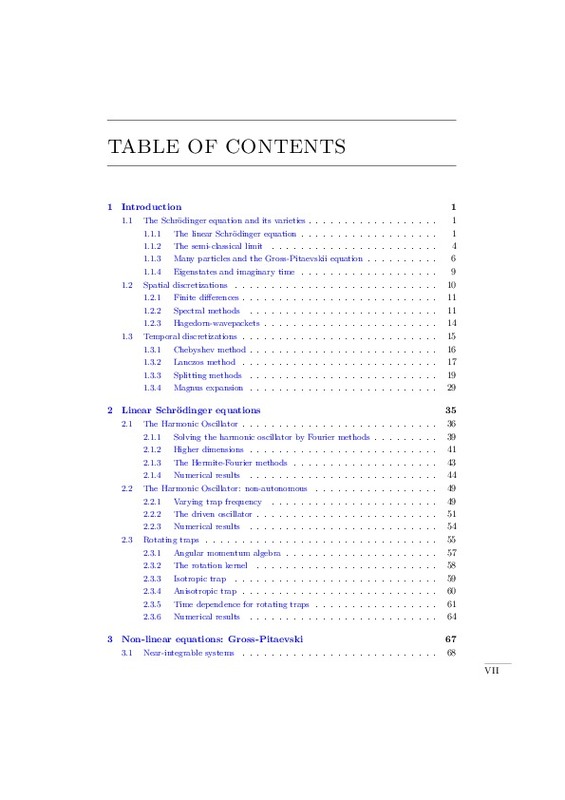|
Resumen:
|
The celebrated Schrödinger equation is the key to understanding the dynamics of
quantum mechanical particles and comes in a variety of forms. Its numerical solution
poses numerous challenges, some of which are addressed ...[+]
The celebrated Schrödinger equation is the key to understanding the dynamics of
quantum mechanical particles and comes in a variety of forms. Its numerical solution
poses numerous challenges, some of which are addressed in this work.
Arguably the most important problem in quantum mechanics is the so-called harmonic
oscillator due to its good approximation properties for trapping potentials. In
Chapter 2, an algebraic correspondence-technique is introduced and applied to construct
efficient splitting algorithms, based solely on fast Fourier transforms, which
solve quadratic potentials in any number of dimensions exactly - including the important
case of rotating particles and non-autonomous trappings after averaging by Magnus
expansions. The results are shown to transfer smoothly to the Gross-Pitaevskii
equation in Chapter 3. Additionally, the notion of modified nonlinear potentials is
introduced and it is shown how to efficiently compute them using Fourier transforms.
It is shown how to apply complex coefficient splittings to this nonlinear equation and
numerical results corroborate the findings.
In the semiclassical limit, the evolution operator becomes highly oscillatory and standard
splitting methods suffer from exponentially increasing complexity when raising
the order of the method. Algorithms with only quadratic order-dependence of the
computational cost are found using the Zassenhaus algorithm. In contrast to classical
splittings, special commutators are allowed to appear in the exponents. By construction,
they are rapidly decreasing in size with the semiclassical parameter and can be
exponentiated using only a few Lanczos iterations. For completeness, an alternative
technique based on Hagedorn wavepackets is revisited and interpreted in the light of
Magnus expansions and minor improvements are suggested. In the presence of explicit
time-dependencies in the semiclassical Hamiltonian, the Zassenhaus algorithm
requires a special initiation step. Distinguishing the case of smooth and fast frequencies,
it is shown how to adapt the mechanism to obtain an efficiently computable
decomposition of an effective Hamiltonian that has been obtained after Magnus expansion,
without having to resolve the oscillations by taking a prohibitively small
time-step.
Chapter 5 considers the Schrödinger eigenvalue problem which can be formulated as
an initial value problem after a Wick-rotating the Schrödinger equation to imaginary
time. The elliptic nature of the evolution operator restricts standard splittings to
low order, ¿ < 3, because of the unavoidable appearance of negative fractional timesteps
that correspond to the ill-posed integration backwards in time. The inclusion
of modified potentials lifts the order barrier up to ¿ < 5. Both restrictions can be
circumvented using complex fractional time-steps with positive real part and sixthorder
methods optimized for near-integrable Hamiltonians are presented.
Conclusions and pointers to further research are detailed in Chapter 6, with a special
focus on optimal quantum control.
[-]
|














